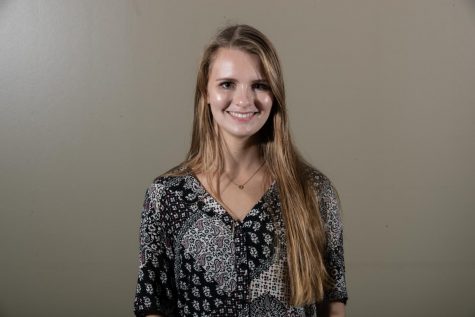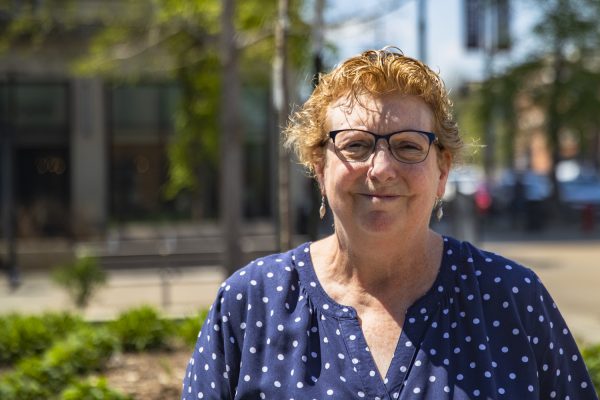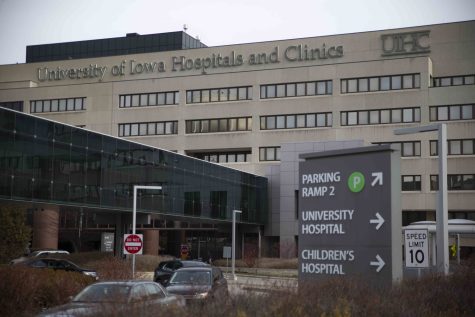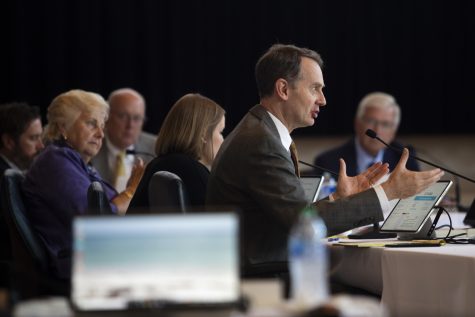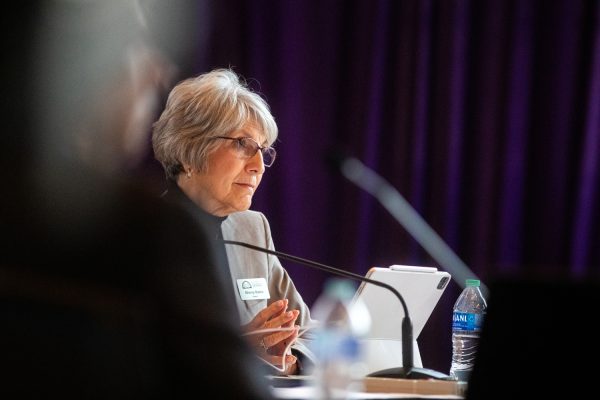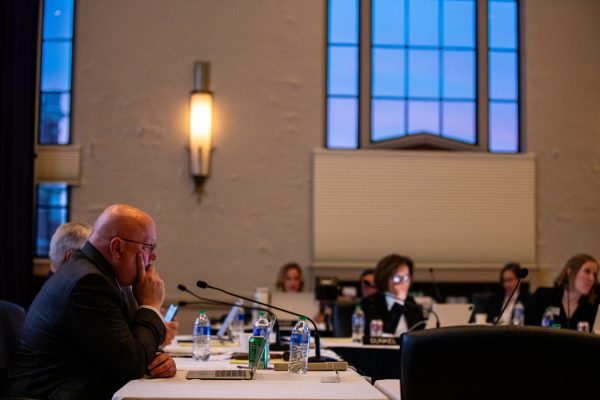Injury UI research center reports five recommendations to address overdoses in Iowa
The Injury Prevention and Research Center released a report outlining five recommendations to the state to reduce overdoses in Iowa.
The College of Public Health Building can be seen on Sunday, Sept. 15, 2019. The College of Public Health is working with the College of Pharmacy to examine the role of high risk medication in falls in the elderly.
February 23, 2020
Following concerns about the unique challenges that rural areas face in combating the opioid epidemic, the University of Iowa Injury Prevention and Research Center recently released a report outlining five priorities of reducing overdoses in Iowa.
According to a National Institute of Drug Use report, deaths related to overdoses in Iowa are lower than the national average — with 6.9 deaths per 100,000 people compared to a national average of 14.6 deaths per 100,000 people.
Seventy-three percent of opioid-related deaths in Iowa come from urban counties, accounting for the majority, but rural areas face challenges such as increased distance to treatment, a lack of trained doctors who understand overdose treatment, less social support, and higher rates of manual labor. All of the above increase the risk for injury.
The report is a continuation of a 2017 project with the research center and other stakeholders.
The five priorities outlined in the report were created by stakeholders such as the UI College of Public Health, Iowa Poison Control, the U.S. Attorney’s Office of Southern Iowa, health-care company Aetna, and others.
“The first thing we did was we presented evidence-based strategies for addressing the opioid epidemic and we compared that to policies and programs that were happening in our state,” said Ann Saba, communications specialist for the Iowa Injury Prevention and Research Center.
RELATED: UI professor addresses ‘epidemic of despair’ in 37th annual Presidential Lecture
Recommendations included developing a holistic approach to treatment plans, creating timely communication networks between stakeholders, developing and implementing a public-education campaign, providing funding for naloxone access and distribution, and considering polysubstance drug use in surveillance, prevention, and treatment methods.
Sarah Ziegenhorn, executive director and founder of the Iowa Harm Reduction Coalition, emphasized the importance of naloxone access.
Naloxone, also known as Narcan, is the only known medication that can reverse an opioid overdose, Ziegenhorn said. Few overdoses are reversed by medical personnel, she said, and nearly 90 percent of overdoses are reversed by laypersons.
“With regards to the availability of naloxone or Narcan, many states are much further ahead of Iowa in making this medication widely available,” Ziegenhorn said. “In many states, you can go into public-health departments, social-service agencies, clinics, pharmacies, and many different types of community locations, and you get this medication handed for free to you.”
RELATED: UI professor’s opioid research evaluates link between opioid use and chronic pain
Micheal Niles, a UI public health master’s student who worked on the report as his practicum, also highlighted the need for more access to naloxone and more research into polysubstance drugs — a combination of drugs such as opioids that can be treated with naloxone and other illicit drugs.
“Early prevention is crucial, because the earlier you start somebody on the treatment, the better odds you have of preventing any negative health outcomes,” Niles said.
Saba also touched on the importance of cooperation in addressing opioid use.
“The opioid issue is something that’s very multi-faceted,” Saba said. “It’s something that we all have to work together on. So, we don’t want to be working in our individual silos based on our field. We want to get out of our silos and start talking more to each other on how to address these issues in our state.”




